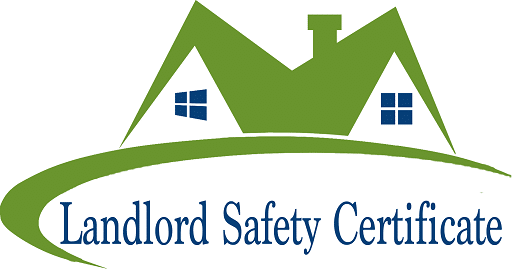
Running a House in Multiple Occupation (HMO) in London brings unique responsibilities and strict legal requirements. Every landlord must maintain safe living conditions and follow licensing rules to protect tenants and avoid costly penalties. One of the most critical steps is preparing for an HMO inspection. With the right approach, you can stay ahead of the law, pass inspections smoothly, and manage your property with confidence. This HMO safety guide will walk you through everything London landlords need to know, from documentation to fire safety, while ensuring strong multiple occupancy compliance.
Inspections are not just routine checks; they are designed to safeguard tenant welfare and maintain property standards. London has one of the UK’s largest HMO markets, with thousands of shared houses, student flats, and converted properties. Local councils carry out inspections to verify compliance with licensing rules and to prevent overcrowding.
Following this HMO safety guide helps landlords understand the purpose of inspections and prepare effectively. More importantly, inspections reinforce multiple occupancy compliance, which guarantees that shared properties meet the highest safety and living standards expected in London.
Before preparing for an inspection, landlords must fully grasp the licensing system. In London, most HMOs require a mandatory license if five or more tenants live in one property. Additional or selective licenses may apply depending on the borough. A valid license typically lasts five years, but renewal can depend on continued compliance.
By studying this HMO safety guide, landlords learn how licensing links directly to inspections. The framework ensures that properties meet all requirements for multiple occupancy compliance, making inspections a routine yet essential part of responsible property management.
When councils visit, they examine specific safety and quality areas to ensure tenants live in safe conditions. These include fire protection systems, gas checks, electrical safety, general maintenance, and adequate amenities. Inspectors may also check record keeping and tenant agreements.
This HMO safety guide emphasizes that knowing what to expect during a visit reduces stress. Landlords who align their property with these standards show strong multiple occupancy compliance, which improves both tenant satisfaction and long-term rental success.
Paperwork is just as important as the physical inspection. Councils will expect up-to-date Gas Safety Certificates, Electrical Installation Condition Reports (EICR), Energy Performance Certificates, and fire risk assessments. They may also ask for tenancy agreements and maintenance records.
According to this HMO safety guide, keeping documents organized—either digitally or in a dedicated folder—prevents delays and misunderstandings. Having proof of inspections and repairs demonstrates transparency and strengthens your case for multiple occupancy compliance during council checks.
Fire safety is one of the most heavily scrutinized aspects of an HMO inspection. Landlords must provide smoke alarms on every floor, fire doors with self-closing mechanisms, fire blankets in kitchens, and clearly marked escape routes. Regular fire risk assessments are also essential.
This HMO safety guide highlights that fire precautions save lives and protect investments. In London’s older housing stock, fire hazards are a major concern, making robust systems vital. Proper fire safety is a central requirement for multiple occupancy compliance, ensuring tenants live in a secure environment.
Gas and electrical systems are critical to property safety. Annual gas checks by a Gas Safe registered engineer are mandatory, and landlords must present certificates promptly. Electrical systems must be inspected at least every five years, with EICRs available for council review.
This HMO safety guide stresses scheduling these checks early to avoid expired certificates. London councils often demand quick proof, so being proactive is essential. Keeping these systems in top condition is a non-negotiable element of multiple occupancy compliance, reducing risks of accidents and penalties.

HMO inspections also focus on whether properties provide sufficient space and amenities. London councils set minimum bedroom sizes and expect enough kitchens, sinks, and toilets for the number of tenants. Inspectors will measure rooms and check layouts to confirm compliance.
By following this HMO safety guide, landlords can ensure properties remain suitable for shared living. Providing adequate facilities not only passes inspections but also improves tenant experience. These requirements form a key part of multiple occupancy compliance, which prioritizes fairness and livability in shared homes.
Energy efficiency is becoming a bigger priority in London inspections. Landlords must meet minimum EPC ratings and provide adequate heating and insulation to reduce damp, mould, and high energy bills. Proper ventilation systems are also essential for healthy living spaces.
This HMO safety guide encourages landlords to treat energy efficiency as an investment, not just a requirement. Comfortable, energy-efficient homes attract better tenants and reduce complaints. Strong energy standards are now a recognized part of multiple occupancy compliance, ensuring shared housing is modern and sustainable.
Landlords cannot prepare for inspections alone—tenants also play a vital role. Councils may ask tenants about repairs, safety measures, and communication with landlords. Clear, respectful communication improves outcomes.
This HMO safety guide recommends informing tenants about inspections, providing fire safety instructions, and encouraging quick reporting of issues. By creating open dialogue, landlords foster cooperation and strengthen multiple occupancy compliance, since councils see evidence of active tenant involvement in property safety.
Managing multiple HMOs across London can feel overwhelming, especially when inspections are frequent. Property managers provide valuable assistance by handling scheduling, documentation, and maintenance. They also stay updated with local council changes.
As this HMO safety guide explains, property managers help landlords avoid oversight and stay prepared year-round. Their expertise ensures smoother inspections and reliable multiple occupancy compliance, which is crucial in London’s demanding rental market.
Many landlords fail inspections due to preventable errors. The most common include missing certificates, poor record keeping, overcrowding, and ignoring tenant complaints. These mistakes damage reputations and cost money.
This HMO safety guide identifies mistakes to avoid and highlights the importance of preparation. Learning from others’ errors helps landlords maintain stronger multiple occupancy compliance, leading to fewer penalties and better tenant relationships.
Non-compliance carries severe financial risks. Councils can issue fines up to £30,000, revoke licenses, or pursue legal action. Properties may also remain vacant during remedial works, causing income loss.
However, this HMO safety guide also notes the benefits of compliance. Safe, efficient, and compliant properties command higher rents and attract long-term tenants. Viewing costs as investments helps landlords strengthen multiple occupancy compliance, which pays off in both financial stability and tenant trust.
HMO regulations in London continue to evolve. Councils are adopting digital monitoring systems, stricter environmental standards, and more frequent checks. Forward-thinking landlords must stay ahead by investing in smarter compliance strategies.
This HMO safety guide advises keeping informed through council updates and landlord forums. Anticipating changes ensures smoother inspections and long-term multiple occupancy compliance, positioning landlords as leaders in responsible property management.
Preparing for an HMO inspection in London requires attention to detail, proactive management, and strong communication. From gas checks to fire precautions, energy efficiency to tenant engagement, every aspect matters. By following this HMO safety guide, landlords will not only pass inspections but also build safer and more reliable homes.
Ultimately, the goal is not simply to avoid fines but to uphold multiple occupancy compliance, which protects tenants, strengthens properties, and enhances landlord reputation. In a competitive city like London, landlords who prepare thoroughly will always stand out.

